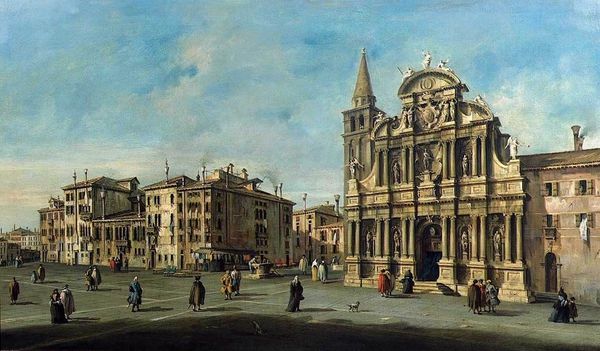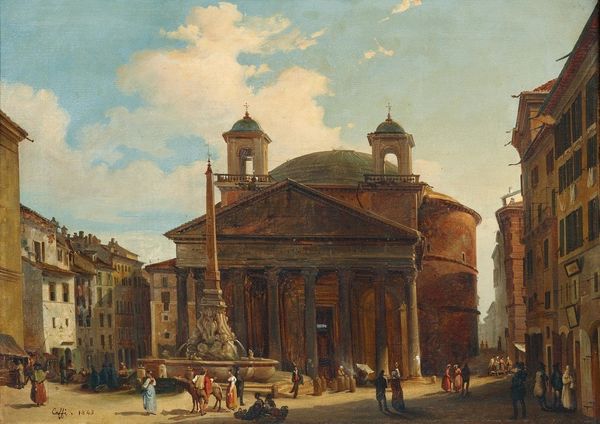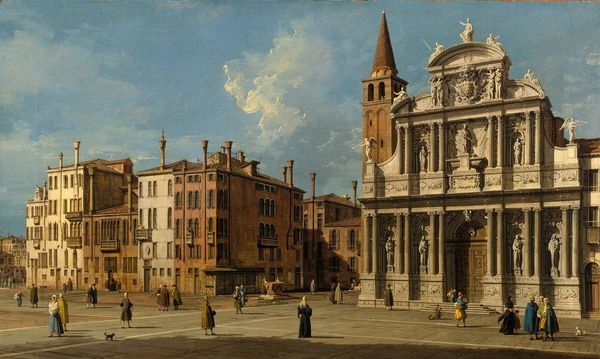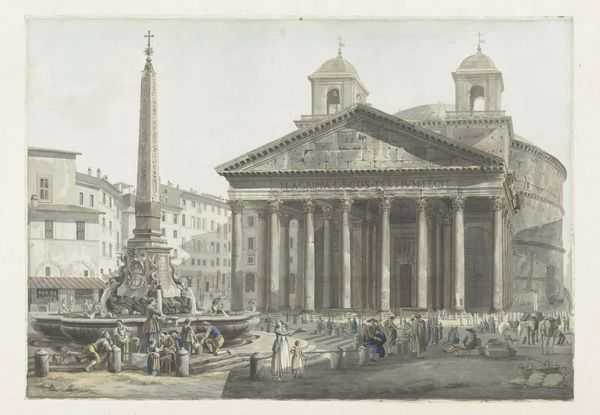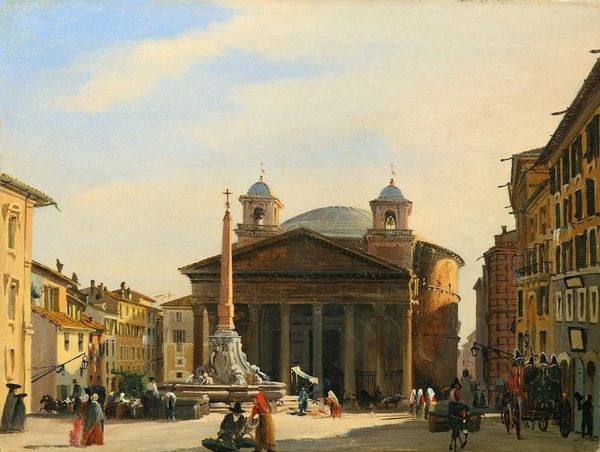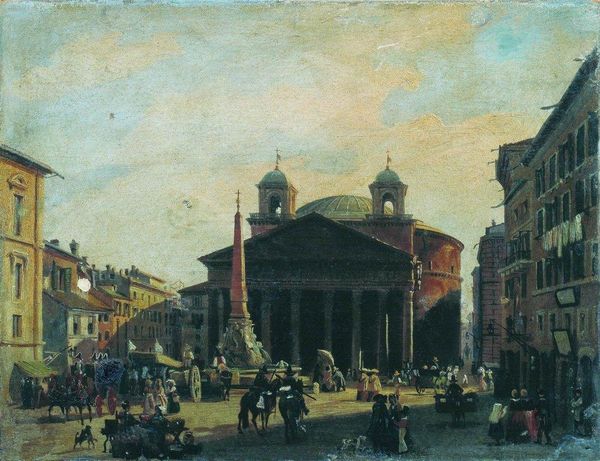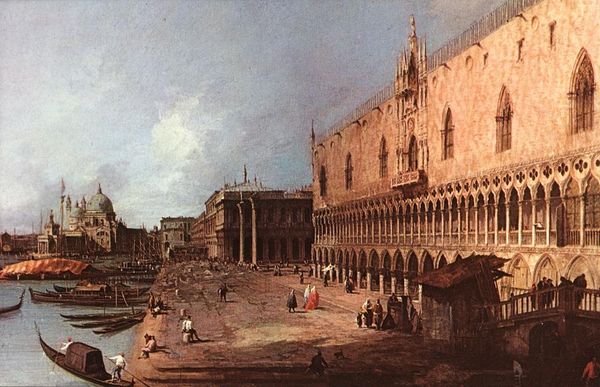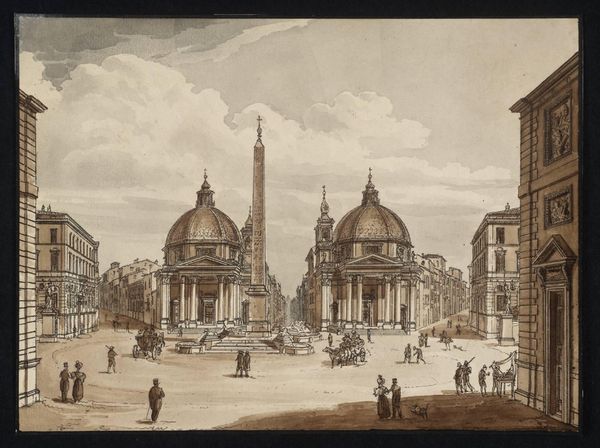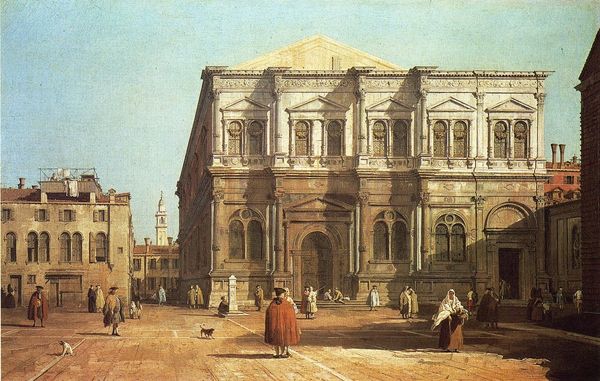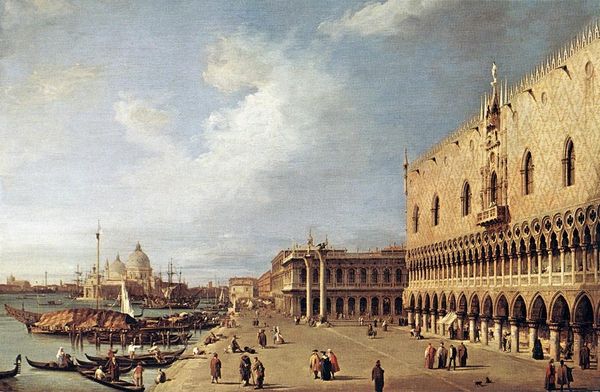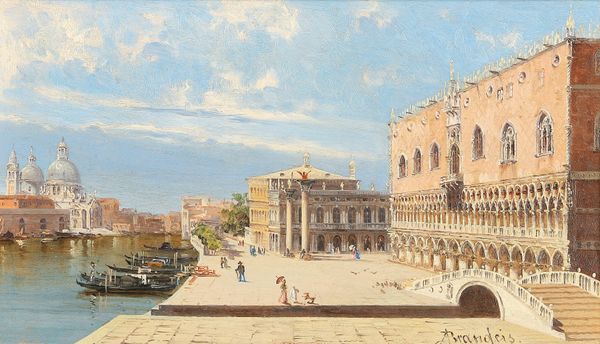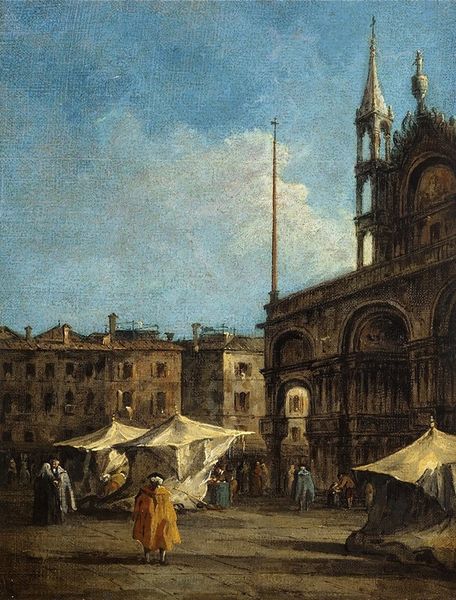
painting, oil-paint, architecture
#
neoclacissism
#
urban landscape
#
painting
#
oil-paint
#
landscape
#
oil painting
#
cityscape
#
italian-renaissance
#
architecture
#
realism
Copyright: Public domain
Editor: This painting, titled "View of the Pantheon, Rome," is an oil painting attributed to Ippolito Caffi. What strikes me most is the sheer density of the architectural details; it's almost overwhelming. How do you interpret this work? Curator: For me, this isn't simply a picturesque cityscape; it's a commentary on power and its visual manifestation. The Pantheon, a structure repurposed over centuries, stands as a symbol of evolving authority, from Roman gods to the Catholic Church. Do you notice how the everyday life of the people almost fades into the background against this powerful structure? Editor: Yes, now that you mention it, they do seem small and almost insignificant compared to the grandeur of the architecture. So, you're saying that the painting invites us to consider the relationship between individual lives and the institutions that shape them? Curator: Precisely! The architectural dominance serves as a constant reminder of the systems at play. We might also ask ourselves, who has access to these spaces, both physically and symbolically? The architecture and the institutions both shape the narrative and lived experience. How does this perspective shift your initial reading of the "density" you mentioned? Editor: It reframes it completely. It’s not just about detail, it is more about this visual representation of the established authority influencing every little aspect of the scene. I will never be able to see cityscapes without this framework again! Curator: And that's the point, isn't it? To encourage a more critical viewing of art and its relation to the broader political, cultural, and social landscape, always. Editor: Exactly!
Comments
No comments
Be the first to comment and join the conversation on the ultimate creative platform.
